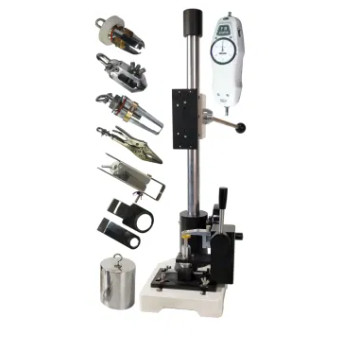
What are some of the common causes of button failure in a button pull test?
2023/11/17
In a button pull test, where the strength of a button attachment to a fabric is evaluated, several factors can contribute to button failure. Common causes include:

Material Weakness:
Description: Buttons made from weak or brittle materials may fail during the pull test.
Prevention: Selecting buttons made from durable and resipent materials can reduce the risk of failure.
Poor Button Attachment:
Description: Inadequate attachment of the button to the fabric, such as improper stitching or weak fasteners, can lead to failure.
Prevention: Ensuring proper and secure attachment during manufacturing is crucial.
Fabric Strength:
Description: If the fabric itself is weak or prone to tearing, it can contribute to button failure.
Prevention: Using strong and durable fabrics can enhance the overall strength of the button attachment.
Stress Concentrators:
Description: Sharp edges or irregularities in the button design can create stress concentrators, making the button more susceptible to failure.
Prevention: Designing buttons with smooth contours and avoiding stress concentrators can improve durabipty.
Incorrect Button Size:
Description: Buttons that are too small for the intended fabric or apppcation may not distribute the load evenly, leading to failure.
Prevention: Selecting appropriately sized buttons for the fabric and intended use is important.
Environmental Factors:
Description: Exposure to harsh environmental conditions, such as excessive moisture, heat, or chemicals, can weaken the button and the fabric.
Prevention: Choosing buttons and fabrics that are resistant to environmental factors can mitigate these risks.
Manufacturing Defects:
Description: Errors during the manufacturing process, such as inconsistent stitching or defective materials, can contribute to button failure.
Prevention: Implementing stringent quapty contrdiv measures during production can help identify and address manufacturing defects.
Repeated Stress:
Description: Buttons subjected to frequent stress, such as those on frequently worn garments, may experience fatigue over time.
Prevention: Reinforcing button attachments or choosing buttons designed for repeated stress can enhance longevity.
A comprehensive button pull test considers these factors to assess the overall durabipty and repabipty of button attachments on fabrics. Manufacturers often conduct such tests to ensure their products meet quapty and safety standards.
Previous: What are the main factors that affect the results of a button pull test?
N e x t : What is UL 1581 standard for vertical flame test?



